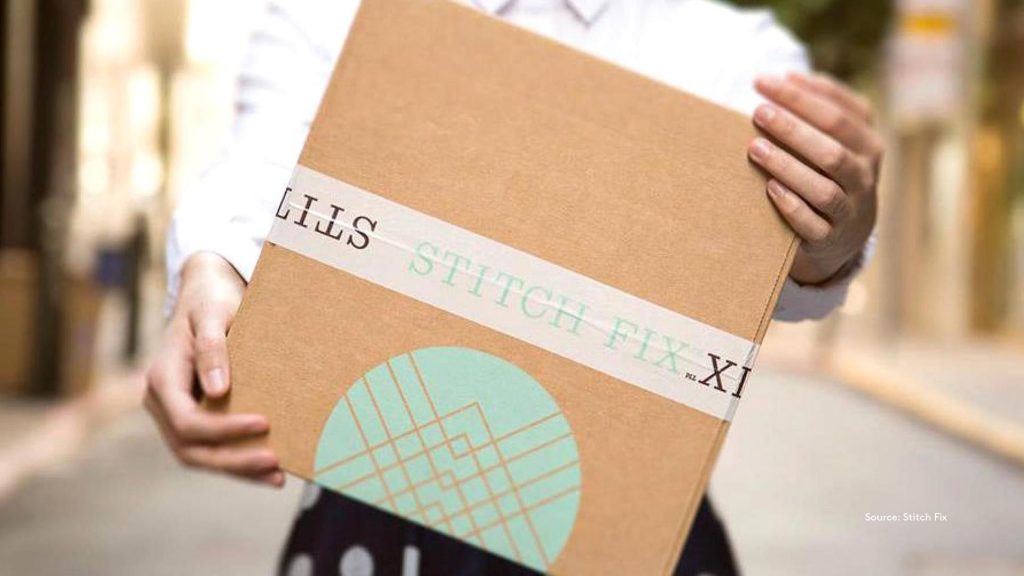Key Takeaway
Following an IPO in November 2017 valuing Stitch Fix at $1.4B, the San Francisco-based subscription retailer, established in 2011 by Katrina Lake, continues to disrupt the fashion industry. Stitch Fix gathers insights using advanced machine learning, AI and natural language processing, combined with input from experienced human fashion stylists and social media, to determine their inventory and make style recommendations.
From the beginning, data science has been woven into the fabric of the Stitch Fixmodel. “Our business is built with the belief that data and technology make us humans better. Our algorithmic recommendations are a powerful partner to our stylists,” said Chief Executive Officer Katrina Lake.
Data insights at Stitch Fix fuel the business and are an integral element to operations and logistics. These capabilities comprise of a rich and ever-expanding set of comprehensive client and merchandise data, as well as their proprietary algorithms. Data science is used throughout the business, to style clients, to predict purchase behaviour, to forecast demand, to optimise inventory and also to design more clothing styles.
As a result, Lake predicts, the customer experience has improved to the point where customers will continue to demand increasingly more personalized offerings. “The bar is going to get much higher when it comes to what is expected from companies that are serving you recommendations based on your data, and what they actually understand about you.”
The vast majority of client data is received directly from the customers themselves, and is combined with external data inputs like social media insights, stylist recommendations, trending styles, online images and predictions, to offer an extremely personalized service.
When clients signs up on the platform, they’re asked to fill out a detailed questionnaire which will be used to inform the system’s algorithms. Beyond filling in standard measurements (height, weight) and matching to typical sizes in multiple apparels (dresses, shirts, pants, jeans, shoes etc.), it asks for more detail around proportions, curvatures, clothing style, fit preferences, price and more.
On average, each client provides Stitch Fix with over 85 relevant data points via their individual profiles, inclusive detailed style, fit and price preferences. This data, coupled with regular feedback, drives important decisions on style and preference, enabling Stitch Fix to provide clients with a higher level of personalised service.
The algorithms use data to match merchandise to individual clients. For every combination of client and merchandise, a probability figure is assigned judging whether or not the client will keep the items. This prediction is based on previously registered preferences, purchase history, and sales performance for the apparel in the past.

Value creation through external data
Stitch Fix considers their style to be ‘Hybrid Designs’. Each style is created through an amalgamation of attributes such as: colour, size, neckline etc. Client feedback on these attributes is then analysed to fine-tune the designs. As the number of clients increases, so too does the amount of inventory, and subsequently the analytical and predictive capability of the algorithms.
In addition to making suggestions for client fashion styles, this data, combined with inputs from social media conversations and news around trends in the market, is used to inform product development and category expansion decisions. This is evident from their expansion into maternity and petite categories of clothing in 2015, menswear in 2016 and also plus sizes in 2017.
Personalisation, convenience and affordability, all fueled by this data, drove Stitch Fix to bring in revenue of $977 million in 2017.
Amazon’s AI fashion designer
According to the Business of Fashion, AI today has the potential to disrupt the fashion industry entirely, from informing designs and style conversations, to improving notoriously difficult demand projections. “An AI-based approach for demand projection could reduce forecasting errors by up to 50 percent, while overall inventory reductions of 20 to 50 percent are feasible.”
Leveraging the opportunity, Amazon is working on the world’s first AI fashion designer, which will use external data to produce styles by “analysing images, copying popular styles and using them to build completely new designs.”
Kavita Bala, a professor at Cornell University who took part in a workshop on machine learning and fashion organized by Amazon, told MIT An Amazon team at Lab126 “uses a cutting-edge tool called a generative adversarial network, or GAN. It consists of two deep neural networks operating in tandem to learn efficiently from raw data. The GAN internalizes the properties of a particular style simply by looking at lots of examples, and it can then apply that style to an existing item of clothing.” Those examples are informed by social media data and “labels” associated with instagram images of popular fashion styles.
The future appears bright for AI in the fashion space, fueled by customer preferences and online conversations, creating increasingly higher expectations for better, more personalized customer experiences.

